
Diabetic Foot Care.
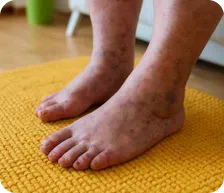
At Structurally Strong Podiatry, we understand that managing diabetes involves more than just monitoring blood sugar levels. Your feet are particularly vulnerable to complications due to nerve damage and poor circulation.


Why Foot Care Matters?
Diabetes can have severe consequences for the feet if poorly controlled. Most foot problems in people who have diabetes occur when injuries and wounds go unnoticed and untreated or when healing is delayed due to poor circulation.
Diabetes can lead to:
Peripheral Neuropathy
Reduced sensation in your feet, making it hard to feel pain, cuts, or blisters.Poor Circulation
Decreased blood flow, which can slow healing and increase infection risk.
These conditions make it crucial to monitor your feet regularly and seek professional care when needed.
What to Expect During a Diabetic Foot Assessment.
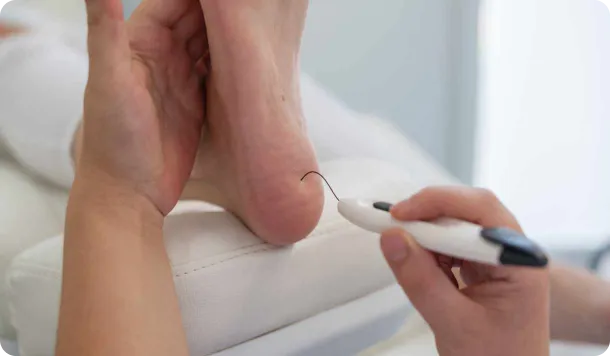
At Structurally Strong Podiatry we have many years’ experience in treating patients with diabetes. We can provide treatment and advice as well as conducting diabetic foot assessments which include the following:
Medical History Review
Understanding your diabetes management and any existing foot issues.Visual Inspection
Understanding your diabetes management and any existing foot issues.Circulation Evaluation
Checking blood flow to your feet.Sensory Testing
Assessing nerve function using monofilament tests.Footwear Advice
Guidance on choosing proper footwear to prevent pressure points.
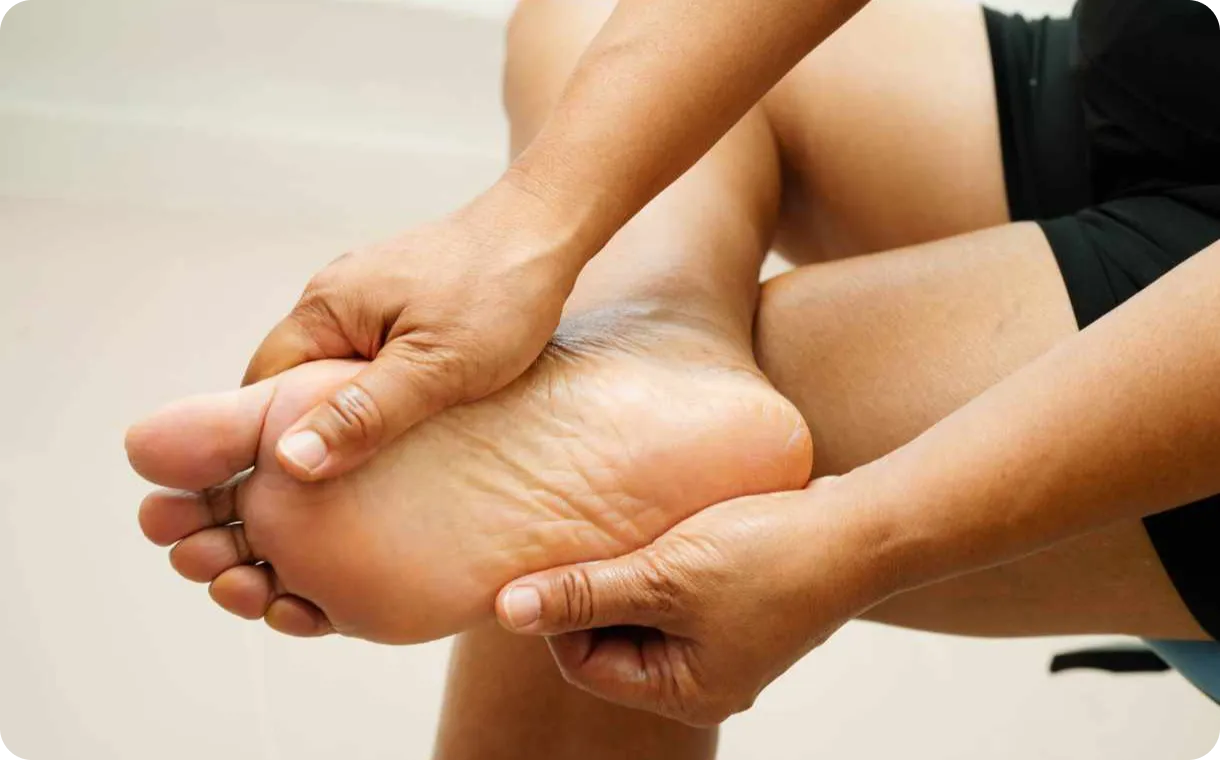
When to Seek Help.
Contact us if you notice:
- Persistent foot pain or discomfort.
- Open sores or ulcers that don't heal.
- Changes in skin colour or temperature.
- Loss of sensation or tingling.
Early intervention is key to preventing serious complications.
Daily Foot Care Tips.
Taking care of your feet at home is vital. Here are some daily practices:
Inspect Your Feet
Look for cuts, blisters, redness, or swelling.
Wash and Dry
Clean your feet daily with warm water and mild soap. Dry thoroughly, especially between the toes.
Moisturise
Apply a fragrance-free moisturiser to keep skin soft but avoid the area between toes to prevent fungal infections.
Trim Nails Carefully
Cut nails straight across and file edges to prevent ingrown nails.
Wear Proper Footwear
Choose shoes that fit well and protect your feet.
Avoid Barefoot Walking
Always wear shoes or slippers to protect against injury.
Taking care of your feet at home is vital. Here are some daily practices:
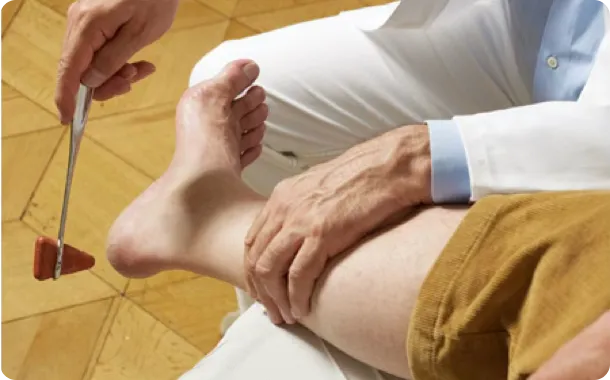
Your Doctor & Assessment.
The assessments are non-invasive and painless and they are very useful in predicting problems and assessing how “at risk” the patient is of developing diabetic foot problems. Assessments are conducted at least every 12 months and a full report is sent to your Doctor (G.P).
Your Doctor will often refer you via the Medicare Enhanced Primary Care Scheme for assessment. If you have the relevant paperwork and valid referral consultations are bulk billed so there will be no out of pocket expense.
How Matthew Can Help.
Matthew has many years’ experience in treating patients with diabetes. He will provide treatment and advice as well as conducting diabetic foot assessments which include the following:
- A thorough visual examination of the feet.
- Nerve and muscle testing using special instruments.
- A comprehensive assessment of the patient’s lower limb circulation using a Doppler ultrasound machine to listen to the arteries, check arterial blood pressures and check the blood flow to the feet.
- Gait analysis to assess whether there are any issues with walking that can be improved with footwear and/or orthotics.
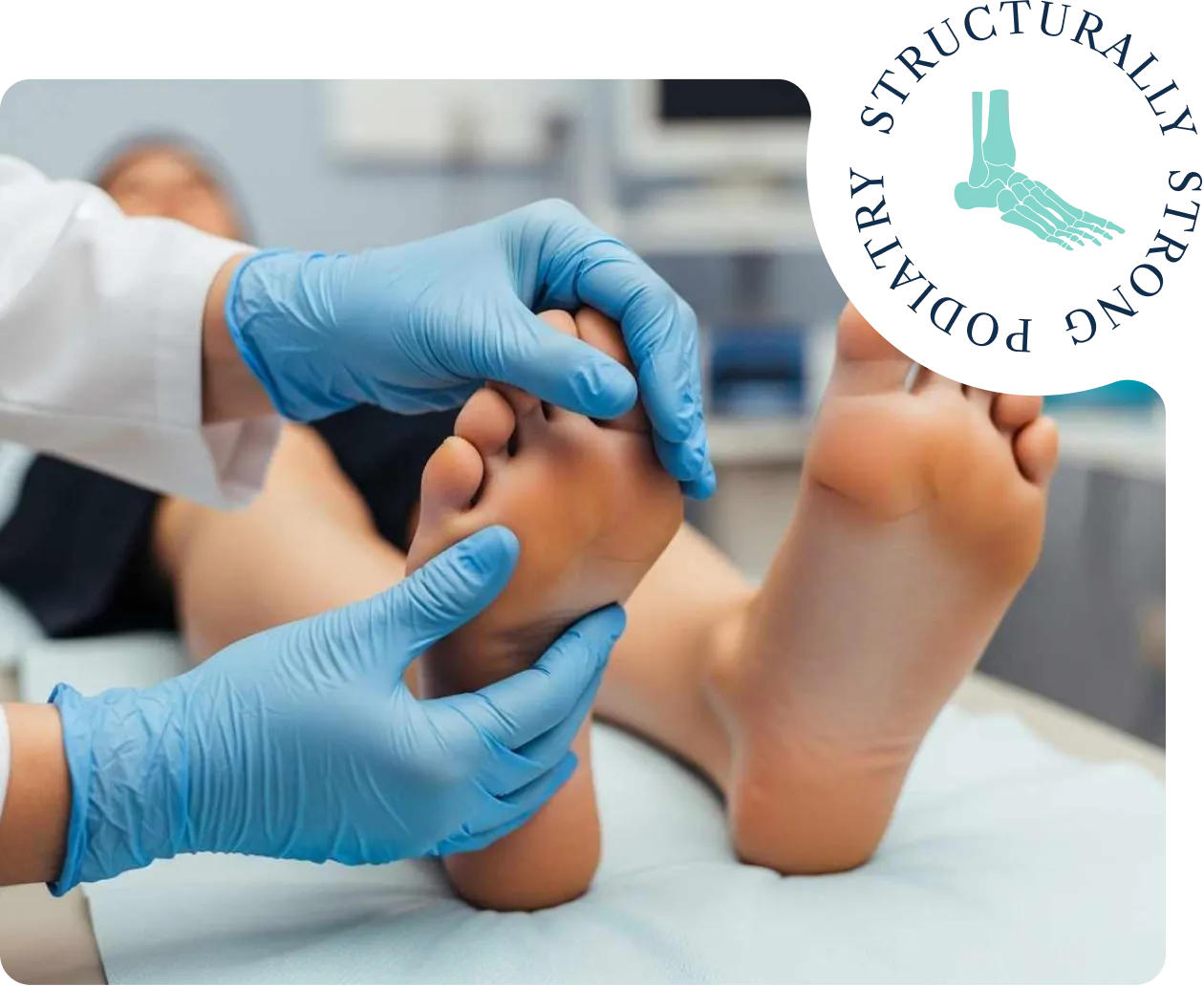
Book Your Diabetic Foot Assessment Today.
Don’t wait for problems to arise. Schedule your diabetic foot assessment with us today and take proactive steps towards maintaining healthy feet.

